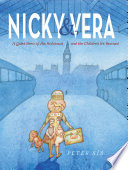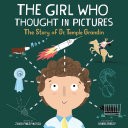Huaco retrato / Huaco Portrait | Gabriela Wiener
La muerte de su padre y los fantasmas de su herencia marcan el retorno de Wiener con esta exploraci�n memorable sobre el amor, el deseo, los celos y el racismo. Un huaco retrato es una pieza de cer�mica prehisp�nica que buscaba representar los rostros ind�genas con la mayor precisi�n posible. Se dice que capturaba el alma de las personas, un registro que ha sobrevivido oculto en el espejo roto de los siglos. Estamos en 1878, y el explorador jud�o-austriaco Charles Wiener se prepara para ser reconocido por la comunidad acad�mica en la Exposici�n Universal de Par�s, una gran feria de "progresos tecnol�gicos" que cuenta entre sus atracciones con un zoo humano, culmen del racismo cient�fico y del proyecto imperialista europeo. Wiener ha estado cerca de descubrir Machu Picchu, ha escrito un libro sobre el Per�, se ha llevado cerca de cuatro mil huacos y tambi�n un ni�o. Ciento cincuenta a�os despu�s, la protagonista de esta historia recorre el museo que acoge la colecci�n Wiener para reconocerse en los rostros de los huacos que su tatarabuelo expoli�. Sin m�s equipaje que la p�rdida ni otro mapa que sus heridas abiertas, las �ntimas y las hist�ricas, persigue las huellas del patriarca familiar y las de la bastard�a de su propia estirpe -que es la de muchos-, la b�squeda identitaria de nuestro tiempo: un archipi�lago de abandonos, celos, culpas, racismo, vestigios fantasmales ocultos en las familias y la deconstrucci�n de un deseo tercamente anclado en un pensamiento colonial. Hay temblor y resistencia en estas p�ginas escritas con el aliento de quien recoge los pedazos de algo que se rompi� hace tiempo, esperando que todo vuelva a encajar. ENGLISH DESCRIPTION The death of her father and the ghosts of her inheritance mark Wiener's return with this memorable exploration of love, desire, jealousy, and racism. A huaco portrait is a pre-Hispanic ceramic piece that sought to represent indigenous faces with the greatest possible precision. It is said that it captured the soul of the person, a record that has survived hidden in the broken mirror of the centuries. We are in 1878, and the Jewish-Austrian explorer Charles Wiener is preparing to be recognized by the academic community at the Universal Exhibition in Paris, a great fair of "technological progress" that has among its attractions a human zoo, the culmination of scientific racism and the European imperialist project. Wiener has been close to discovering Machu Picchu, he has written a book about Peru, he has taken close to four thousand huacos and also a child. One hundred and fifty years later, the protagonist of this story walks through the museum that houses the Wiener collection to recognize herself in the faces of the huacos that her great-great-grandfather plundered. With no more baggage than her loss or any map other than that of her open wounds, the intimate and the historical ones, she pursues the traces of the family patriarch and those of the bastardy of his own lineage -which is that of many-, the search for identity in our time: an archipelago of abandonment, jealousy, guilt, racism, ghostly vestiges hidden in families and the deconstruction of a desire stubbornly anchored in a colonial thought. There is trembling and resistance in these pages written with the breath of someone who picks up the pieces of something that was broken long ago, hoping that everything will fit together again.




















Loved the cover, though!
#Peru (edited) 9mo